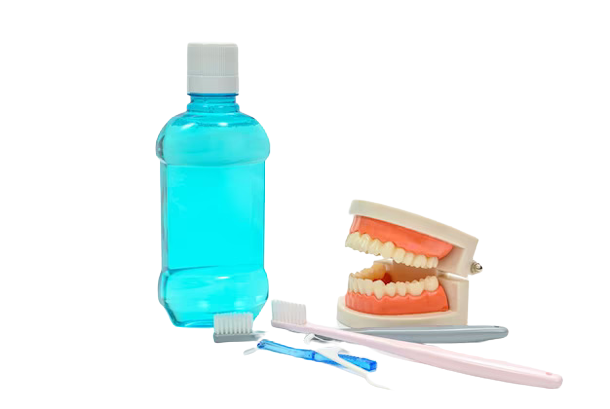Our Services
Oral hygiene guidelines
Oral hygiene guidelines in the United States of America are generally based on the recommendations provided by dental associations and public health authorities. The primary goal of these guidelines is to promote good oral health practices and prevent dental problems such as tooth decay, gum disease, and oral infections.
Here are some common oral hygiene guidelines followed in the USA:

01.
Brushing Twice Daily
Dentists recommend brushing your teeth at least twice a day, ideally after breakfast and before bedtime. Use a fluoride toothpaste and a soft-bristled toothbrush. Brush for at least two minutes each time, covering all tooth surfaces, the gumline, and the tongue.
02.
Flossing Daily
Daily flossing is crucial for removing plaque and food particles from between the teeth and under the gumline. Dental floss or interdental brushes can be used for effective cleaning between teeth.
03.
Limit Sugary and Acidic Foods
Reduce the consumption of sugary and acidic foods and beverages, as they can contribute to tooth decay and enamel erosion. Opt for a balanced diet with plenty of fruits, vegetables, and dairy products for strong teeth and gums.
04.
Habits and Behavior Modification
Teledentistry can help dentists address harmful habits like teeth grinding (bruxism) or nail-biting by providing behavioral modification strategies.
05.
Tobacco Cessation Counseling
Dental professionals can support patients in quitting tobacco use and provide resources to help patients manage and overcome tobacco addiction.
06.
Regular Dental Check-ups
Schedule regular dental check-ups and cleanings with a dentist or dental hygienist. Dentists can detect early signs of dental issues and provide preventive care to maintain oral health.
07.
Fluoride Use
Use fluoride-containing toothpaste and fluoride mouthwash as recommended by your dentist. Fluoride helps strengthen tooth enamel and prevent cavities.
08.
Avoid Tobacco and Smoking
Refrain from using tobacco products and smoking, as they increase the risk of oral cancer, gum disease, and tooth loss.
09.
Protect Teeth During Sports
Wear a mouthguard during contact sports or activities that may pose a risk of dental injury.
10.
Chew Sugarless Gum
Chewing sugarless gum can help stimulate saliva production, which aids in neutralizing acid and reducing the risk of tooth decay.
11.
Oral Hygiene for Children
Parents and caregivers should begin cleaning their child’s gums with a soft, damp cloth before teeth erupt. As soon as the first tooth appears, use a baby toothbrush and a smear of fluoride toothpaste. Encourage regular dental visits from an early age.
12.
Consider Dental Sealants
Dental sealants are protective coatings applied to the chewing surfaces of molars to prevent decay. Discuss with your dentist if sealants are appropriate for you or your child.
These guidelines are intended to promote a lifetime of good oral health. It’s essential to consult with your dentist regularly to assess your oral health needs and receive personalized recommendations for maintaining healthy teeth and gums. Remember that oral health is a crucial part of overall well-being, and preventive care is key to avoiding dental problems in the future.
